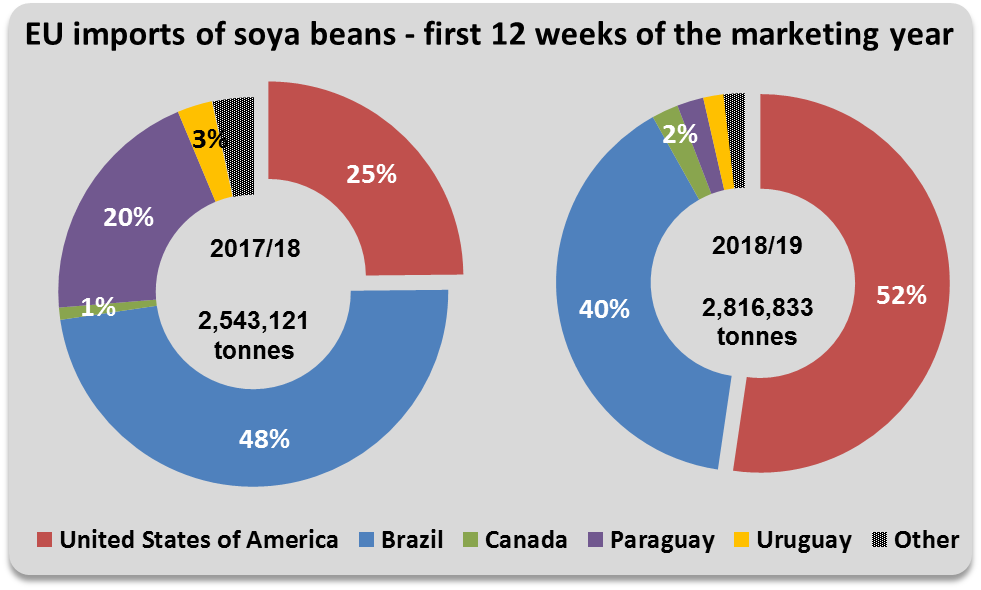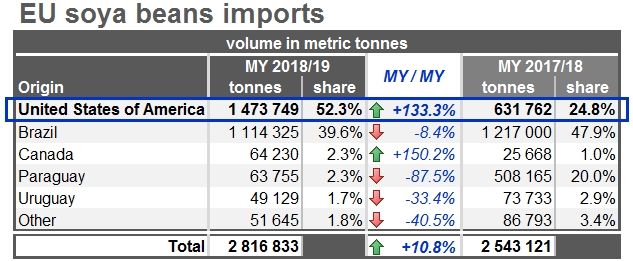One year on: EU-Canada trade agreement delivers positive results
Early signs show that the agreement is already starting to deliver for EU exporters. Commissioner Malmström will visit Canada on 26 and 27 September to take stock of progress.
Whilst in Montreal, the Commissioner will meet with Minister of International Trade Diversification, James Gordon Carr. She will attend the first EU-Canada Joint Committee on 26 September, which is the highest body for the two partners to discuss issues of interest related to the agreement. She will also visit several European and Canadian companies, discuss with company representatives who are already making use of the agreement, and speak at the Université de Montréal on 27 September.
Commissioner for Trade Cecilia Malmström said: “The EU-Canada trade agreement has now been in action for a year and I’m pleased with the progress made so far. The preliminary data shows there is plenty to celebrate, even at this stage. Exports are up overall and many sectors have seen impressive increases. This is great news for European businesses, big and small. As ever with these agreements, there are certain areas where we have to make sure that we thoroughly implement what has been agreed, making sure that citizens and companies can fully benefit from the new opportunities. This is something I intend to discuss with my Canadian counterparts at the Joint Committee next week. I’m happy to say that our partnership with Canada is stronger than ever – strategically as well as economically. Together, we are standing up for an open and rules-based international trading order. CETA is a clear demonstration of that.”
Early days but positive trends
In addition to removing virtually all customs duties, CETA has given a boost to the business climate between the EU and Canada, offering valuable legal certainty for EU companies looking to export. Although it is too early to draw any firm conclusions, the initial trade results are pointing in the right direction. Across the EU, the latest statistics available, covering the October 2017 to June 2018 period, suggest that exports are up by over 7% year on year.
Of these, certain sectors are doing especially well. Machinery and mechanical appliances, which make up one fifth of EU exports to Canada, are up by over 8%. Pharmaceuticals, which account for 10% of the EU exports to Canada and are up by 10%. Other important EU exports are also on the rise: furniture by 10%, perfumes/cosmetics by 11%, footwear by 8% and clothing by 11%.
In terms of agricultural products, there are also some encouraging figures: exports of fruit and nuts increased by 29%, chocolate by 34%, sparkling wine by 11% and whisky by 5%.
Companies that are already benefitting from CETA in different ways include, for example:
- The consortium of Italian San Daniele ham producers increased its sales to Canada by 35%. Exports of Italian agricultural products to Canada are up by 7.4% overall.
- Belgian chocolate company Smet Chocolaterie that has just opened their first shop in Ontario, Canada, to cope with extra demand for their products; thanks to scrapping of 15% import duties their sales increased by a fifth compared to year ago. European exports of chocolate to Canada are up 34% overall.
- Spanish company Hiperbaric making innovative machines for preserving food using high pressure. Thanks to CETA, it is easier for their workers to enter Canada temporarily to install and maintain their equipment.
Company examples from Belgium, Estonia, Finland, France, Ireland, Italy, The Netherlands, Spain, and Sweden are available here.
Background
CETA offers new opportunities for EU businesses of all sizes to export to Canada. The agreement eliminated tariffs on 98% of products that the EU trades with Canada. This amounts to approximately €590 million in saved duties per year once all the tariff reductions kick in. It also gives EU companies the best access ever offered to companies from outside Canada to bid on the country’s public procurement contracts – not just at the federal level but at provincial and municipal levels, too.
CETA creates new opportunities for European farmers and food producers, while fully protecting the EU’s sensitive sectors. The agreement now means that 143 EU high quality food and drink products (the “geographical indications”) can now be sold under their own name in Canada and are protected from imitation.
The agreement also offers better conditions for services’ suppliers, greater mobility for company employees, and a framework to enable the mutual recognition of professional qualifications, from architects to crane operators.
CETA has been provisionally in force since 21 September 2017 following its approval by EU Member States, expressed in the Council, and by the European Parliament. It will only enter into force fully and definitively, however, when all EU Member States have ratified the agreement.
The EU has 39 trade agreements with 69 countries in place. The latest agreement concluded by the EU is with Japan. The EU’s trade agreements have been proven to spur European growth and jobs. One example is the EU-South Korea trade deal. Since it entered into force in 2011, EU exports to South Korea have increased by more than 55%, exports of certain agricultural products have risen by 70%, EU car sales in South Korea have tripled and the trade deficit turned into a surplus. 31 million jobs in Europe depend on exports. On average, each additional €1 billion of exports supports 14 000 jobs in the EU.
For more information


